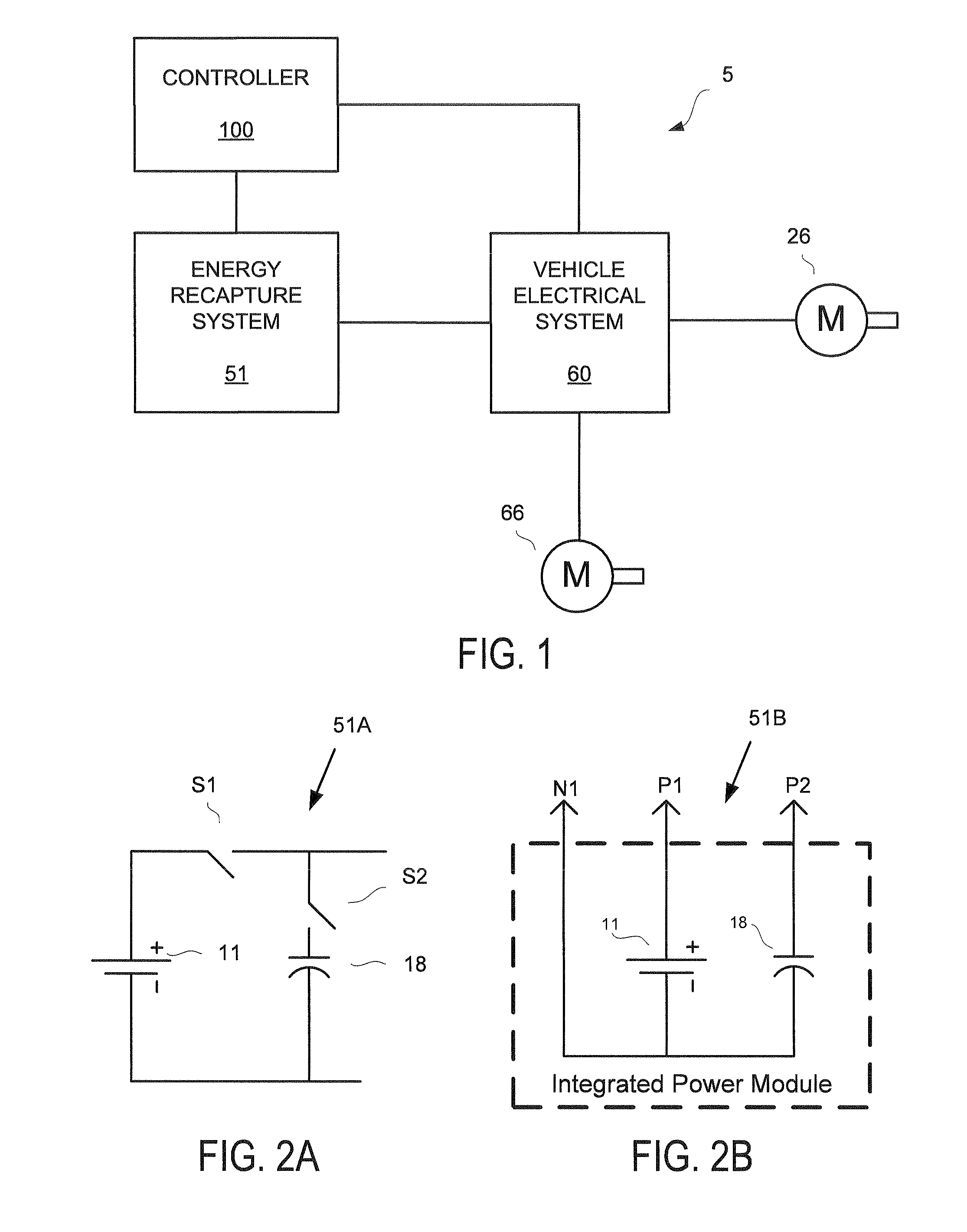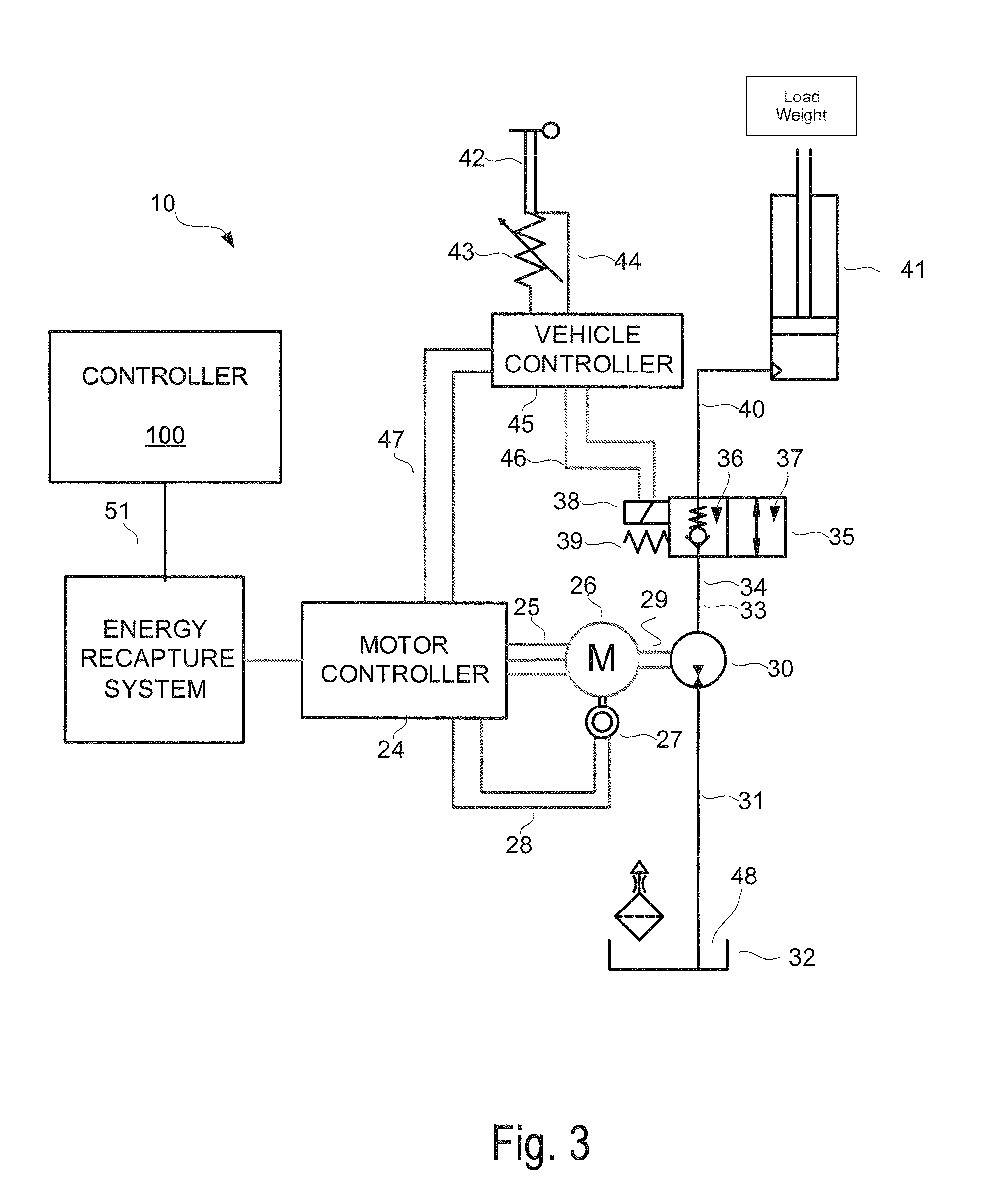Energy recapture for an industrial vehicle
a technology for industrial vehicles and energy, applied in the direction of motor/generator/converter stoppers, dynamo-electric converter control, capacitor propulsion, etc., can solve the problems of reducing vehicle performance and effective operating time, reducing the overall productivity of electric vehicles, and losing productivity tim
- Summary
- Abstract
- Description
- Claims
- Application Information
AI Technical Summary
Benefits of technology
Problems solved by technology
Method used
Image
Examples
Embodiment Construction
[0020]FIG. 1 illustrates a simplified block diagram of an industrial vehicle 5 comprising a vehicle electrical system 60 and an energy recapture system 51. The vehicle electrical system 60 is shown as including or being operatively connected to one or more electrical motors 26, 66. The one or more motors may provide power for a variety of vehicle operations, and may include a hoist motor 26, a traction motor 66, or an auxiliary motor (not shown). The one or more motors 26, 66 may operate as electrical generators during an energy recapture event, such that electricity generated by the one or more motors 26, 66 may be supplied to and stored in the energy recapture system 51.
[0021]Energy provided by the one or more motors 26, 66 or by the energy recapture system 51 may be used for a number of different vehicle operations or functions. For example, energy requests or demands may be made for one or more of the following: vehicle traction, hoist, lighting, horn, backup alarm, operator com...
PUM
 Login to View More
Login to View More Abstract
Description
Claims
Application Information
 Login to View More
Login to View More - R&D
- Intellectual Property
- Life Sciences
- Materials
- Tech Scout
- Unparalleled Data Quality
- Higher Quality Content
- 60% Fewer Hallucinations
Browse by: Latest US Patents, China's latest patents, Technical Efficacy Thesaurus, Application Domain, Technology Topic, Popular Technical Reports.
© 2025 PatSnap. All rights reserved.Legal|Privacy policy|Modern Slavery Act Transparency Statement|Sitemap|About US| Contact US: help@patsnap.com



